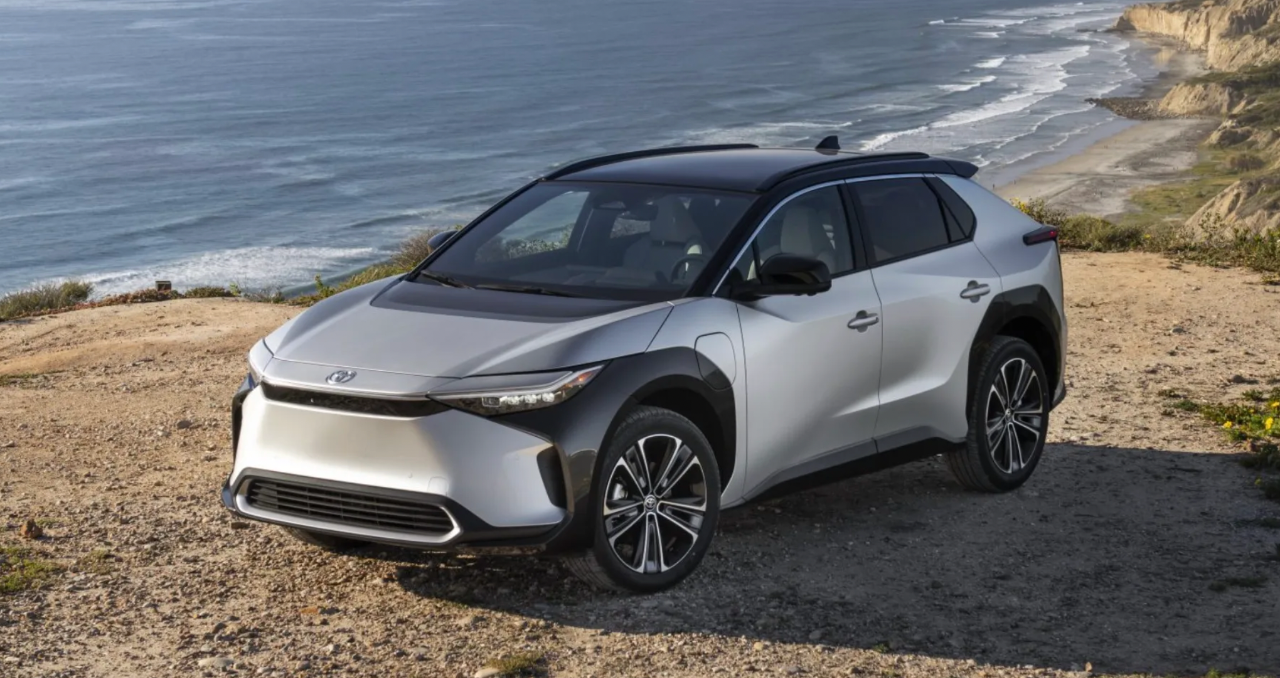Manbetx Posted from the Copilot Temple
Reference for Smart Cars | AI4Auto WeChat Official Account
Toyota’s first pure electric vehicle is a bit late to the game:
The Toyota bZ4X is priced at $42,000 (approximately RMB 267,000), based on the latest e-TNGA pure electric architecture and is the first model in Toyota’s bZ pure electric series.
With a maximum range of 615 kilometers, maximum charging power of 150 kW, and a 0-80% charging time of 30 minutes.
In terms of intelligence, it is equipped with Toyota’s third-generation Toyota Safety Sense (Toyota intelligent driving safety system), which provides basic L2 level driving assistance.
According to the data, Toyota’s first shot at electrification and transformation is overly ordinary and conservative.
So why is this unremarkable electric vehicle worth paying attention to?
Very simple: the Toyota bZ4X is not just the pioneer of Toyota’s pure electric vehicle field, but more importantly, it represents Toyota’s conservative approach to electrification and smart transformation.
How is the first model?
Let’s start with the intelligent configuration.
The Toyota bZ4X is equipped with Toyota’s third-generation Toyota Safety Sense (Toyota intelligent driving safety system). In terms of hardware configuration, it is equipped with the Mobileye EyeQ4 automatic driving chip, a single front camera design, 12 ultrasonic radar detectors on the body’s outer side, and millimeter-wave radar.
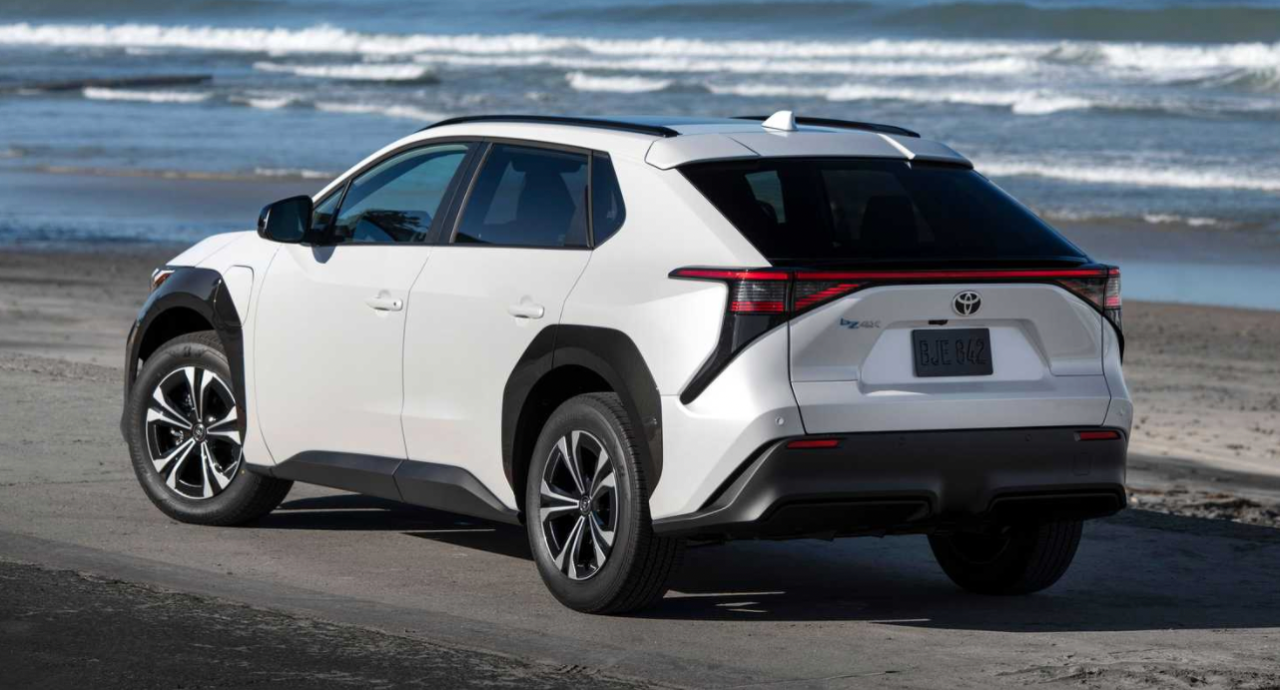
In terms of functionality, it can achieve basic L2 level intelligent driving functions, including lane keeping and ACC adaptive cruise control.
In terms of the three-electric system, the Toyota bZ4X has two versions: dual-motor and single-motor. The single-motor version has an output power of 150 kW (201 horsepower), while the dual-motor version has a power distribution of 80 kW+80 kW (214 horsepower).
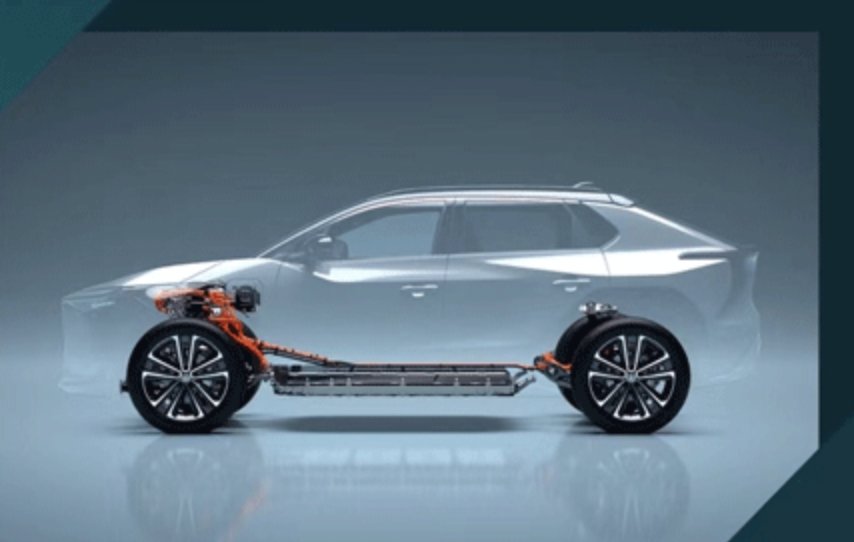
The Toyota bZ4X is equipped with ternary lithium batteries, with Panasonic and CATL as the suppliers. The single-motor version is equipped with a 71.4 kWh battery pack from Panasonic, and the dual-motor version is equipped with a 72.8 kWh battery pack from CATL.
In terms of range, according to the Ministry of Industry and Information Technology’s data, the single-motor version has a range of 615 kilometers under CLTC conditions, and the dual-motor version provides two range versions of 500 kilometers and 560 kilometers.
The Toyota bZ4X has a maximum charging power of 150 kW, and it takes 30 minutes to charge from 0% to 80% battery capacity.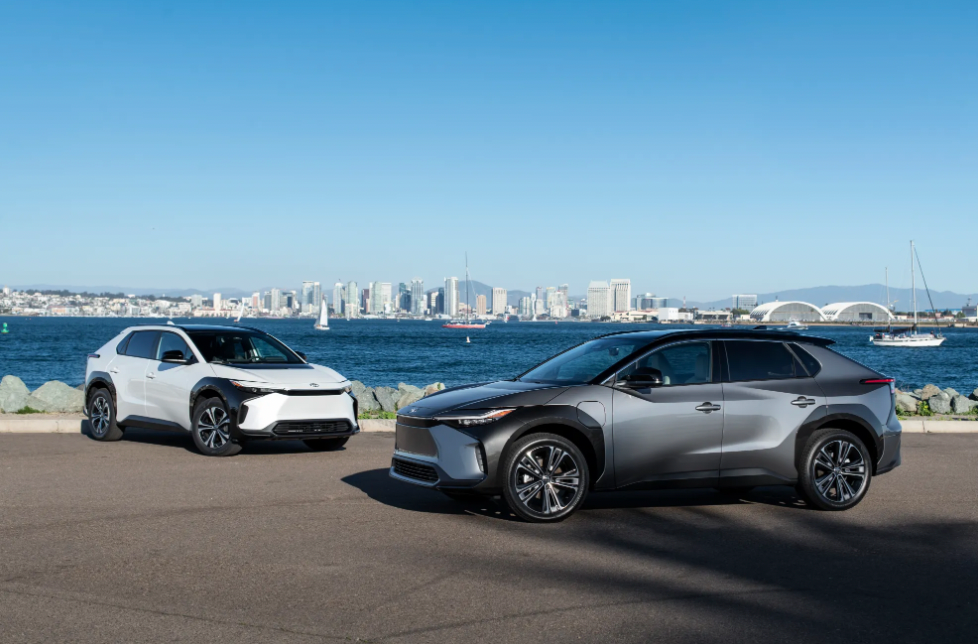
In terms of exterior design, the Toyota bZ4X adopts a grilleless design commonly seen in electric vehicles. The body lines of the Toyota bZ4X are relatively tough on the side, and the tapered design of the D-pillar is more obvious.
In terms of size, the Toyota bZ4X belongs to the compact SUV category, but it is larger in size than other models in the same category. The data shows that the length of the Toyota bZ4X is 4690mm, the width is 1860mm, the height is 1650mm, and the wheelbase is 2850mm.
The vehicle dimensions provide a relatively large amount of space in the cabin, with an overall cabin length of 1940mm, a width of 1515mm, and a maximum height of 1169mm.
In terms of interior design, the Toyota bZ4X uses a large center console screen in the middle of the front row for map navigation, in-car entertainment, and comfort control.
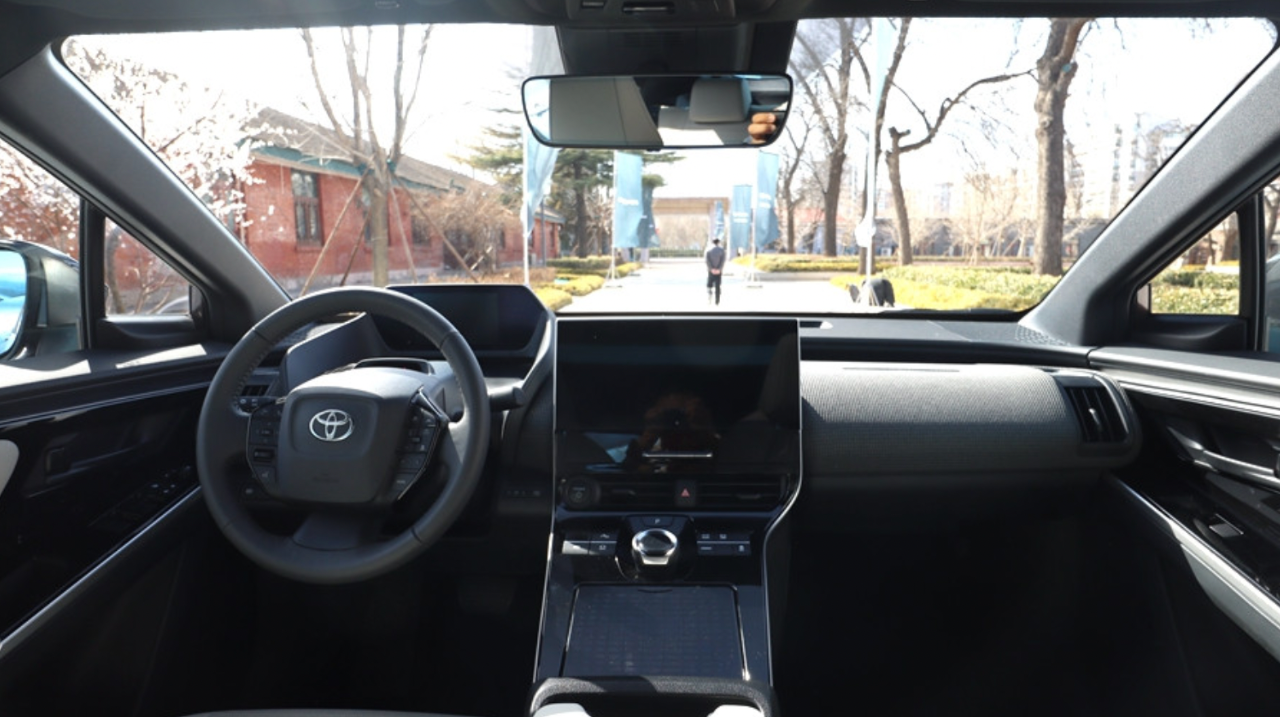
The most important factor – price:
This car has already been released in the United States, with a local selling price of US $42,000 (equivalent to RMB 267,000) – $48,780 (equivalent to RMB 311,000), positioned as a medium-high-end model.
Compared with other new electric vehicles in the same price range, the performance of the Toyota bZ4X is considered average.
In terms of intelligent driving, it also lacks competitiveness. The official positioning of this car is mainly concentrated on the evaluation dimensions of traditional cars, such as space, comfort, and off-road capabilities.
Taking reference from classic car models, yes, this is Toyota.
However, there are also highlights:
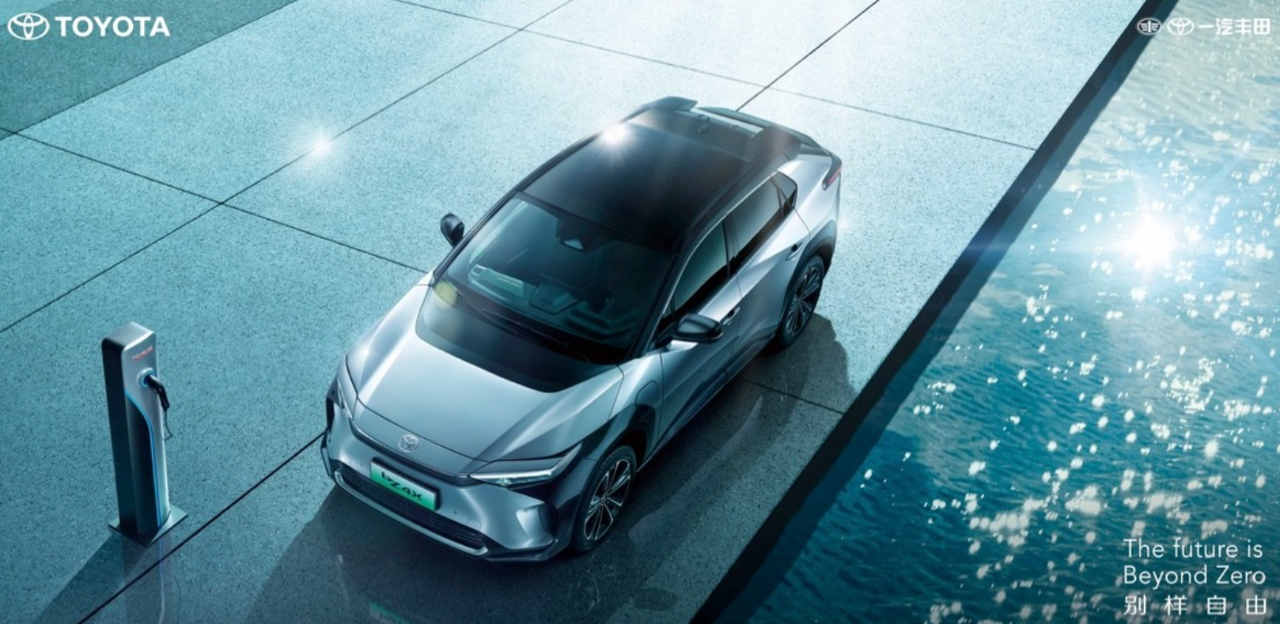
Firstly, the solar charging panel on the roof, which can charge the power battery. The official claim is that it can provide an additional range of 1800 kilometers for the Toyota bZ4X per year.
The Tesla Cybertruck, which also adopts a solar panel design on the roof, unfortunately, is still in the pre-production phase of “postponed this year and definitely next year.”
In addition, Toyota’s wire-control steering technology is also installed in this car. Specifically, the Toyota bZ4X equipped with this technology can control the steering within a range of 150 degrees to the left and right of the steering wheel.
Friends who are unsure how many times to turn the steering wheel or how to return it to center can rest assured.
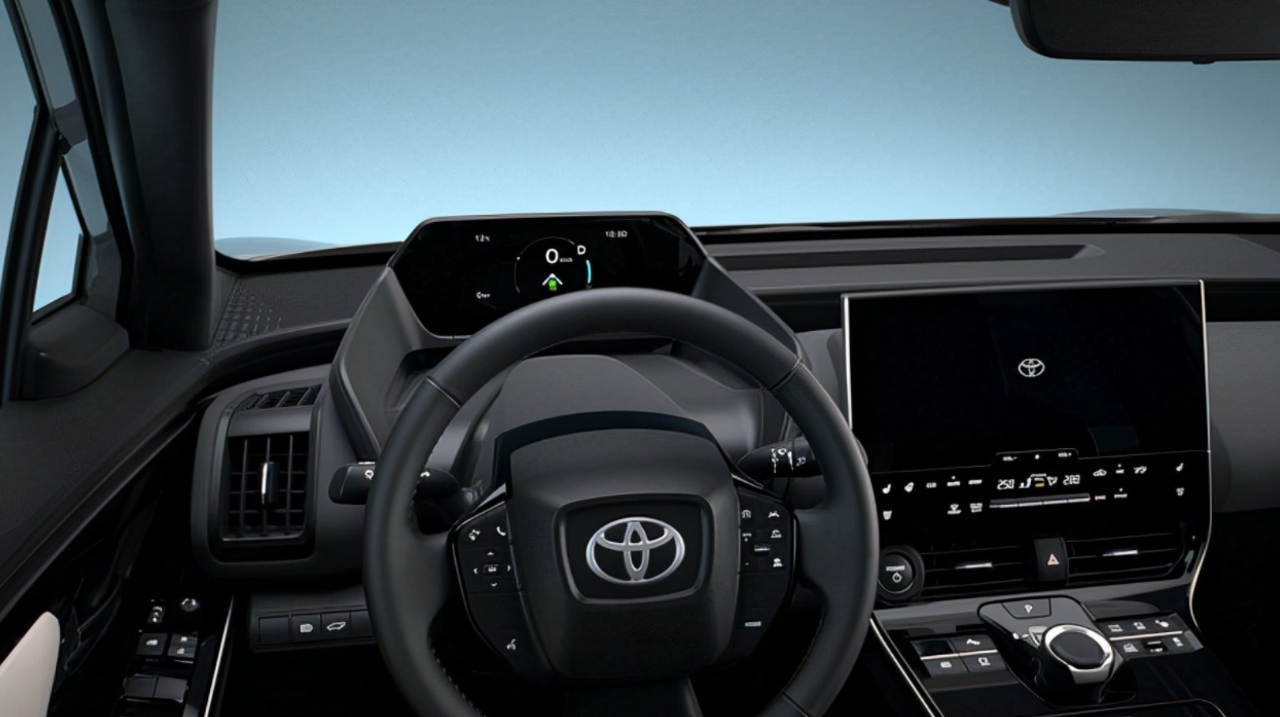
Is Toyota still conservative?# Toyota bZ4X
The Toyota bZ4X, which has not yet been launched in China, has not been thoroughly tested in the country. However, foreign media have conducted test drives and evaluations. In general, it receives more criticism than praise.
Firstly, the driving experience and spaciousness are highly praised. The Toyota bZ4X electric platform was developed jointly with Subaru, which provides advantages in terms of sportiness and off-road capability. The exterior design features a lower hood, shorter front end, thinner A-pillar and smaller tilt angle, all of which combine to create impressive driving visibility. Additionally, the entire cabin provides excellent noise insulation. The short front end also leaves more space in the cabin, which is similar to the Ford Mustang Mach-E in length and wheelbase, but has better interior space than the latter.
On the downside, there are several criticisms:
Firstly, the platform layout places the motor system of the Toyota bZ4X under the hood, which is similar to the internal combustion engine layout. As a result, the vehicle lacks a luggage compartment.
Secondly, the charging power is another issue. The maximum 150 kW fast charge can charge 0-80% within half an hour, which lags behind mainstream fast charging solutions.
In addition, the design of the Toyota bZ4X’s dashboard is more traditional and resembles that of a gasoline-powered car. The remaining battery power is not displayed in a percentage but in remaining mileage.
Lastly, the well-known electric car magazine INSIDEVs has defined this vehicle in a single sentence:
As a traditionally conservatively-managed company, Toyota did not aim to create an outstanding first pure electric vehicle. The design of this car shows that Toyota did not consider the needs of electric vehicle users, nor does it believe that electric vehicles are superior to hybrid vehicles. After all, Toyota is still sticking to the transition phases of hybrid vehicles.
This statement not only describes the final evaluation of the car itself, but also provides an overall assessment of Toyota’s entire electrification strategy: “testing the waters” with pure electrics while remaining committed to hybrid technology. As the leader of the Japanese trio, the world’s top-selling automaker, Toyota perfectly exemplifies the concept of “turning a big ship is difficult”.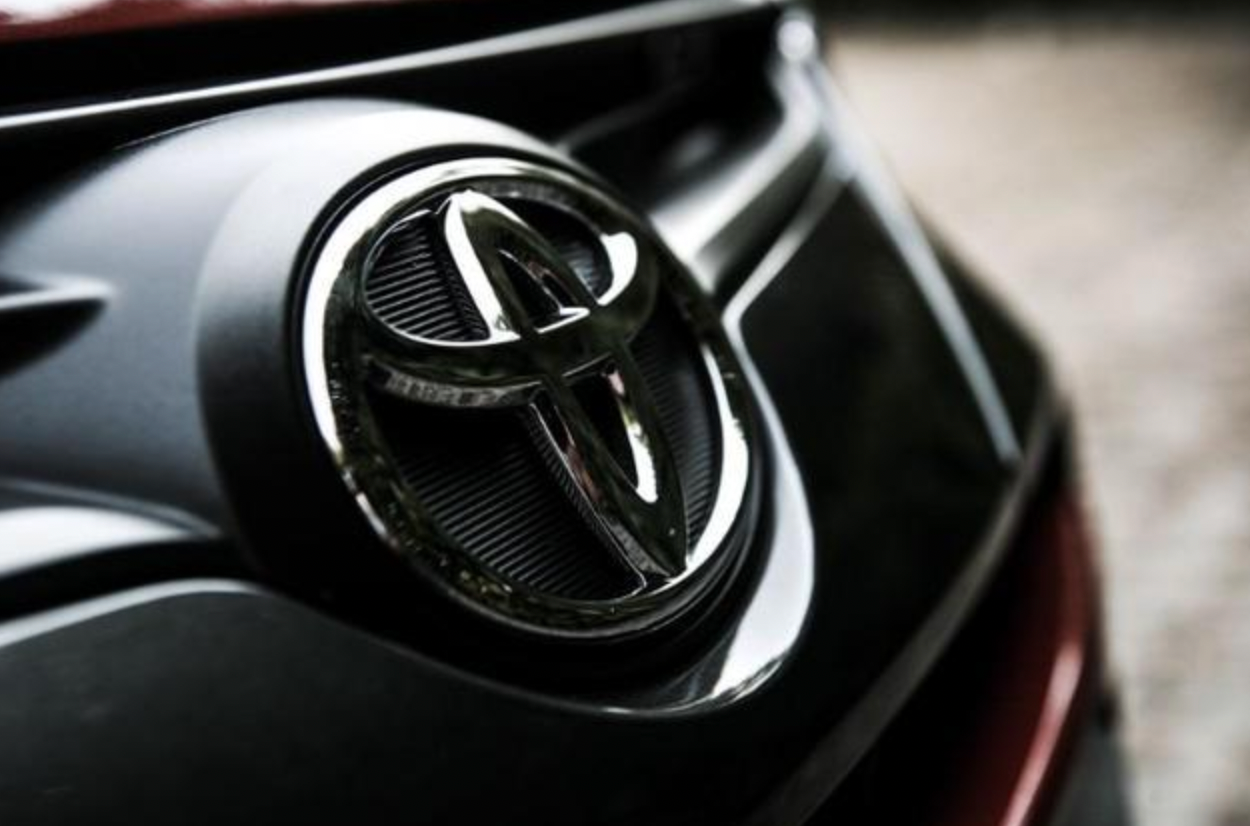
Last December, Toyota’s electrification transformation strategy came late.
According to the plan, Toyota will invest 8 trillion yen ($72.6 billion) in the field of electrification by 2030 and release 30 electric vehicle models, with a target of 3.5 million pure electric vehicle sales.
The data is frightening, but it depends on the situation:
Of the 8 trillion yen investment, only half will be invested in the pure electric field, which is 4 trillion yen ($36.3 billion), and the target of selling 3.5 million pure electric vehicles is almost equivalent to 33% of Toyota’s global sales last year.
This means that by 2030, if Toyota’s sales continue to grow, the penetration rate of Toyota’s pure electric vehicles will further decline.
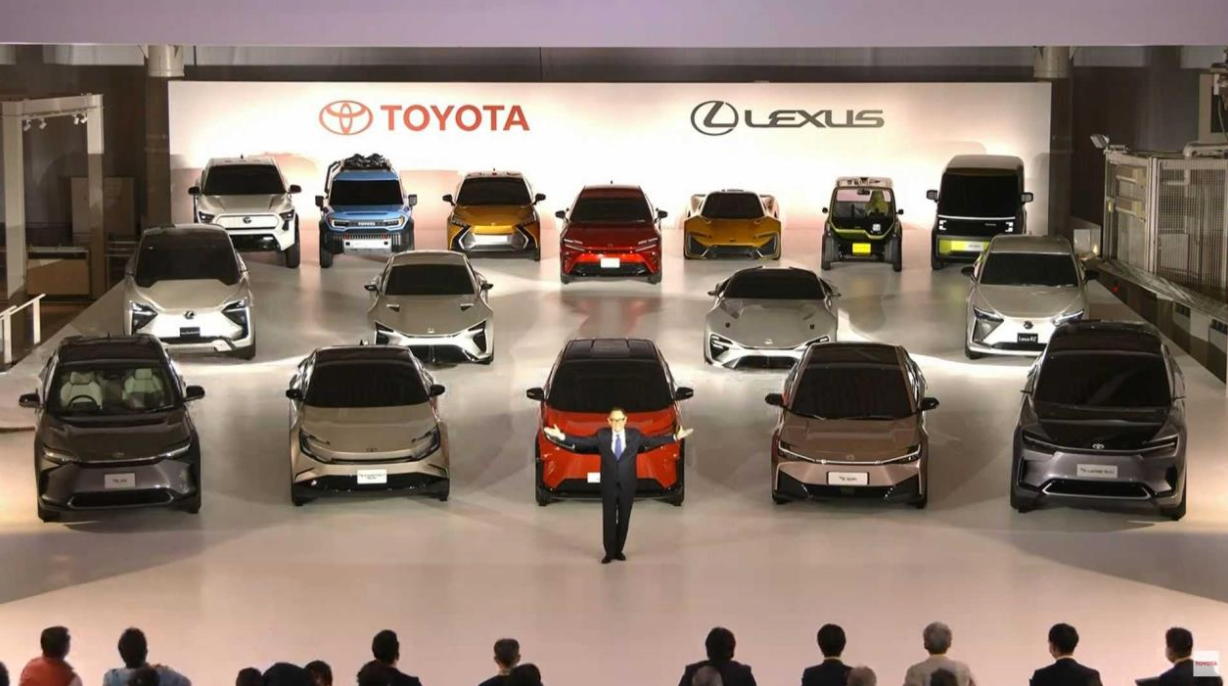
Who gets the rest?
Three directions: hybrid models, fuel vehicles, and hydrogen fuel cell cars that Toyota is unwilling to give up.
Compared to other traditional automakers seeking to make a quick transition and setting a timetable for the complete suspension of fuel vehicles, by 2030, it will be a fully electrified situation.
If according to this pace, Toyota will become one of the few players still in transition.
However, by that time, can traditional automakers or emerging carmakers still give Toyota a chance to transition?
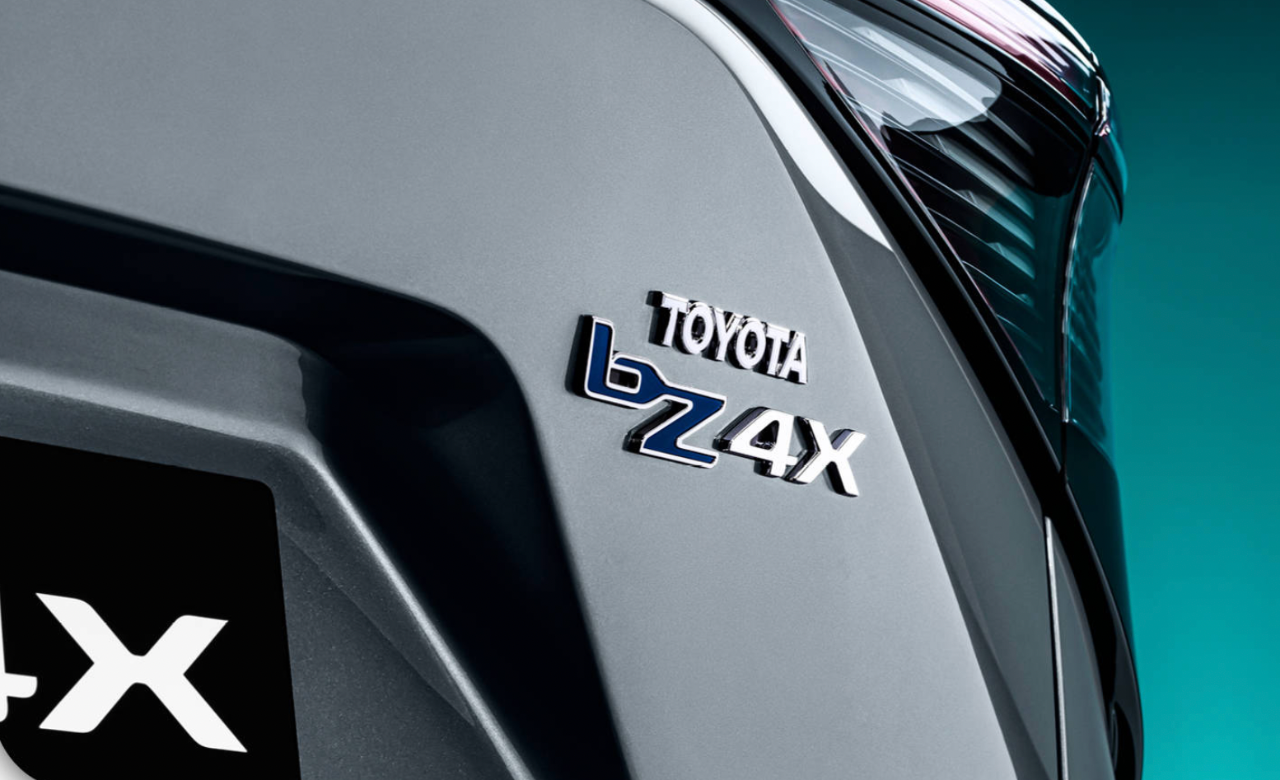
one more thing
Regarding autonomous driving, Toyota recently made a new breakthrough:
Following the path of Tesla, it switched to a purely visual route for automatic driving, with vehicle-road coordination.
Recently, Toyota also released a test video of an intelligent driving system for passenger cars based on a purely visual solution, which can achieve L3 level high-speed lead assistance.
The program comes from Toyota’s autonomous driving subsidiary Woven Planet, and in the future, this system will be fully installed on Toyota’s passenger cars.
Done.
“`
This article is a translation by ChatGPT of a Chinese report from 42HOW. If you have any questions about it, please email bd@42how.com.
